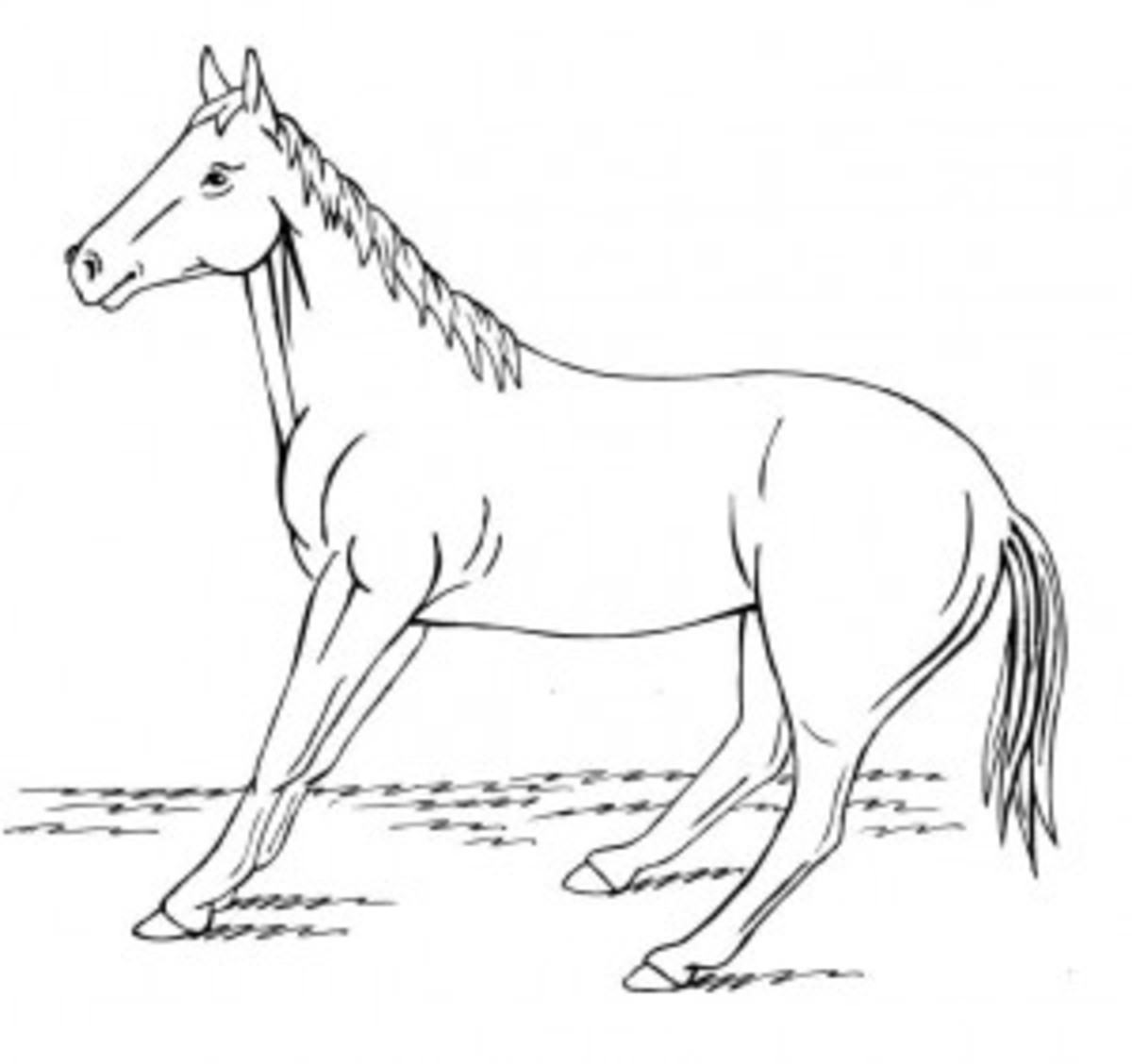Your horse is standing oddly. He’s sort of leaning back, as if he’s trying to avoid putting weight on his front feet.

In fact, that may be exactly what he’s attempting to do. The sensitive laminae inside his hooves are likely inflamed, and the resulting pressure?inside the confines of the hoof capsule?is causing severe pain.
Think of what it would be like if you had a painful foot condition and you were wearing too-tight shoes, and you’ll have a hint of what a laminitic horse is experiencing.
Laminitis (often referred to as “founder” see “Laminitis’ or Founder'” below) is an all-too-common and potentially deadly ailment. It’s also one that’s far better avoided than treated (see “Prevention,” below).
If you ever find yourself suspecting that your horse may be suffering a bout of laminitis, here are some basic do’s and don’ts from David Turoff, DVM. His Foothill Mobile Veterinary Service in Placerville, California, deals with a wide range of equine emergencies, including laminitis.
DO call your veterinarian immediately if you even suspect laminitis based on your horse’s stance and behavior. This is a true emergency, in which almost every minute of delay in treatment counts. Your veterinarian will have specific advice about how to proceed while he or she is en route to your horse.
DO check your horse’s digital pulses to verify that laminitis is the likely problem. Learn beforehand how to palpate the back of your horse’s fetlock for an increase in the strength of those pulses?the hallmark of laminitis. There are other reasons why digital pulses might strengthen, but if your horse has stronger-than-normal pulses in both forefeet, you should assume he’s laminitic until proven otherwise.
(Tip: Find out how to check your horse’s digital pulse.)
DON’T force?or even encourage?your horse to walk any more than is absolutely necessary to get him to a safe, level, and dry place.
DO place your horse in a clean, dry stall, with very deep bedding, unless doing so would require forcing him to walk a long distance (in which case you should shelter and bed him where he is).
DON’T feed your horse anything while waiting for your vet; laminitis is often related to diet, particularly carbohydrates. That means even grass hay could have too much carbohydrate content for the situation.
DO follow your vet’s instructions, which may include giving anti-inflammatory medication (such as Banamine or phenylbutazone), icing the feet, padding the feet with Styrofoam or therapeutic boots (such as Soft-Ride boots), and other possibilities.
DON’T give any medication before speaking with your veterinarian, or give at any time anything other than what he or she recommends, no matter what the neighbors have on hand.
Laminitis or Founder?
Laminitis is a medical term denoting inflammation of an organ system called the “lamina,” which serves to attach the hoof capsule to the coffin bone (third phalanx).
Founder is an older term that comes from an earlier era in veterinary median. It’s less precise, and much less descriptive of the real pathology. Currently, the most common meaning of founder is “severe laminitis,” but this is not universally understood, so the term founder is best avoided.
Prevention
Laminitis is rarely a primary problem; it’s almost always secondary to metabolic, infectious, or conformational factors that predispose a horse to this condition.
Laminitis is common following retained placenta in the post-partum mare, in insulin-resistant horses, in older horses with pituitary tumors (so-called “Cushing’s disease”), and in obese horses with small feet.
A bout of “binge eating” (such as a grain-bin raid, or too much grazing on rich pasture) can trigger the disease.
A previous episode of laminitis is a strong predisposing factor to subsequent episodes.
Correct attention to all these conditions will help you avoid having to deal with laminitis in your horse.
For more information, see these articles:
What’s Your Laminitis IQ?
Who’s at Risk for Laminitis?
10 Ways to Avoid Laminitis
Reducing Laminitis Risks for Senior Horses
Spot the Hoof Disease Laminitis Early
The Role of Glucose in Laminitis






